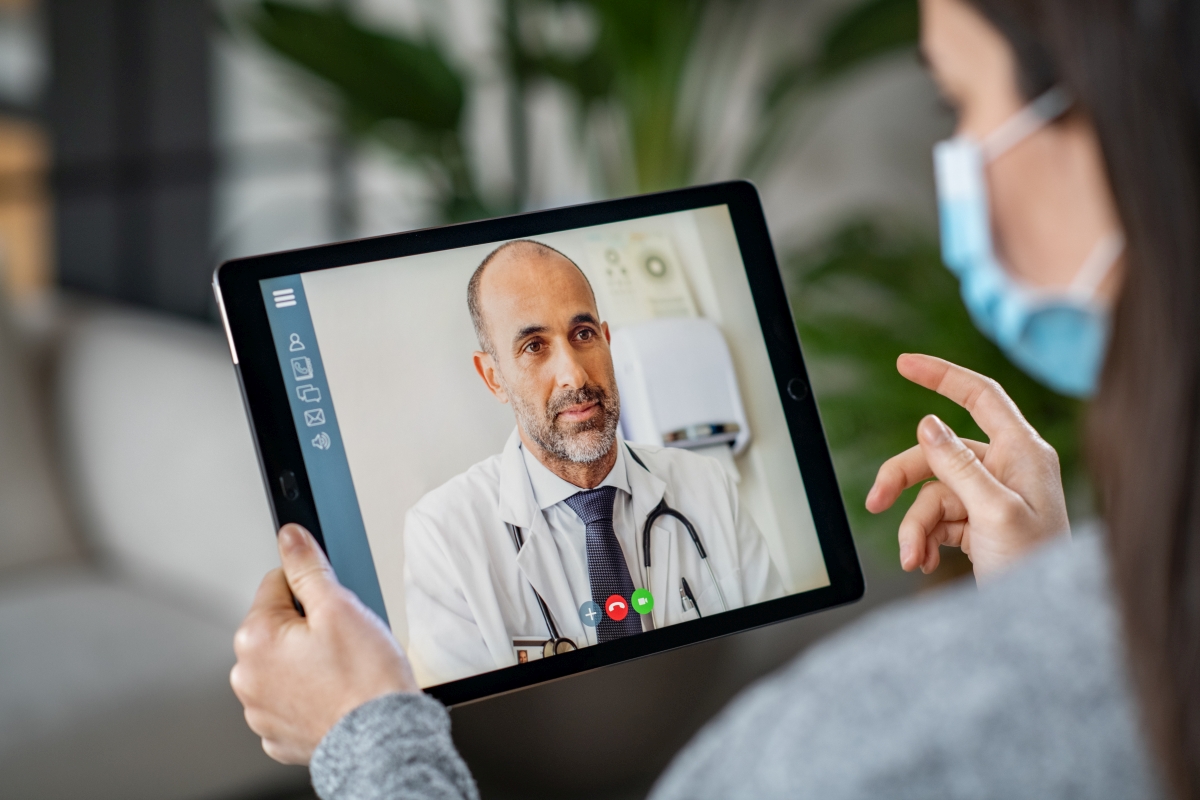Teledoctors: Reinventing Accessibility to Healthcare Solutions
Wiki Article
Exploring the Conveniences and Challenges of Teledoctors in Modern Healthcare
As the healthcare landscape advances, teledoctors have become a pivotal component in linking voids in clinical gain access to and efficiency. While they offer the promise of reaching remote locations and lowering operational costs, the trip is not without its difficulties. Privacy issues, the electronic divide, and cybersecurity threats posture considerable difficulties that should be dealt with to harness their complete capacity. How can the healthcare sector balance these advantages with the intrinsic difficulties? This dilemma invites a deeper expedition into the transformative role of teledoctors in shaping the future of medical care shipment.Expanding Accessibility to Care
Telemedicine has actually become a critical technology in contemporary medical care, substantially increasing access to look after diverse populaces. By leveraging digital technology, teledoctors have actually changed the traditional healthcare distribution version, making it feasible for people in underserved or remote areas to obtain timely clinical consultation. This evolution is especially advantageous for individuals living in rural communities, where the deficiency of healthcare centers and professionals frequently brings about delayed or insufficient therapy.Teledoctors contribute in linking the gap created by geographical barriers. With online appointments, patients can access a variety of medical care services without the need for considerable traveling. This is especially useful for those with wheelchair problems or persistent problems requiring constant clinical attention. In addition, telemedicine boosts connection of care by making it possible for routine follow-ups and monitoring, thus improving client outcomes.
The assimilation of teledoctors into health care systems also sustains the monitoring of public health and wellness dilemmas by promoting quick feedback and triage. During pandemics, for example, digital appointments reduce the problem on physical health care centers, reducing exposure threats for both clients and healthcare companies. As telemedicine remains to advance, it promises to improve the landscape of medical care access, making it extra reliable and inclusive.
Cost-Effectiveness of Teledoctors
The cost-effectiveness of teledoctors is a significant element driving their extensive adoption in healthcare systems. By lowering the requirement for physical framework and in-person visits, teledoctors provide a more budget friendly choice to traditional healthcare shipment. This version enables health care companies to reduced operational costs, such as those connected with maintaining physical offices and using comprehensive on-site team. teledoctors. Consequently, these financial savings can be passed on to clients in the kind of minimized examination fees, making health care much more available to a wider populace.Furthermore, teledoctors promote an extra reliable use of healthcare resources by lessening unneeded emergency clinic brows through and healthcare facility admissions. Individuals can access prompt appointments for small ailments or follow-up treatment, which aids to alleviate the burden on overstretched healthcare facilities. This efficiency not only results in cost savings for healthcare service providers yet additionally lowers the economic pressure on individuals that might otherwise face costly hospital costs.
In addition, teledoctors can aid in handling chronic diseases more efficiently by offering consistent monitoring and prompt interventions. This proactive strategy can stop issues, thereby lowering long-term therapy expenses. Generally, teledoctors present a feasible remedy to the intensifying prices of healthcare, while keeping high quality care delivery.
Enhancing Patient Comfort
While cost-effectiveness plays a pivotal role in the increase of teledoctors, enhancing individual comfort stands as an additional compelling advantage of this health care model. With the integration of teledoctors, individuals can bypass the typically taxing process of organizing and attending in-person appointments. This design removes the Recommended Site requirement for travel, lowering time spent en route and waiting rooms, thus using considerable time savings for patients. Especially for those with flexibility concerns or staying in remote locations, teledoctors give an important web link to healthcare that might or else be hard to reach.Additionally, teledoctors use flexible scheduling, allowing patients to prepare assessments at times that best suit their individual and professional commitments. This flexibility is important for individuals stabilizing requiring work timetables or family members duties, ensuring that health care can be incorporated seamlessly right into their lives. Furthermore, the capability to accessibility physician from the convenience of one's home can bring about enhanced individual interaction and adherence to treatment plans, as the obstacles to looking for care are reduced.
The convenience offered by teledoctors not only improves the person experience but also adds to a more receptive and reliable healthcare distribution system, eventually supporting far better health results.
Attending To Personal Privacy Concerns
Amidst the expanding adoption of teledoctors, personal privacy worries arise as a significant consideration. As medical care significantly relies on digital systems, ensuring the confidentiality of patient info ends up being extremely important. The digitization of medical records and using telecommunication innovations require durable safety and security procedures to shield sensitive information from unauthorized accessibility and breaches.Medical care companies must follow rigid laws, such as the Medical Insurance Portability and Responsibility Act (HIPAA) in the USA, which develops nationwide criteria for protecting clinical information. Compliance with such laws is critical in keeping client trust and guaranteeing their information is managed properly. Security of information, safe and secure interaction networks, and regular audits are several of the measures that can be applied to boost information defense.
In spite of these steps, difficulties continue. Cybersecurity threats are developing, and health care organizations should continue to be cautious to brand-new vulnerabilities. In addition, enlightening both individuals and medical care providers about finest methods in information privacy is crucial. This includes recognizing the limitations of electronic communication and the importance of protected login qualifications. teledoctors.
As teledoctors become more indispensable to health care shipment, addressing privacy problems is important to make certain both the effectiveness and credibility of these services.

Navigating the Digital Divide
Connecting the electronic divide is a crucial difficulty in the extensive adoption of teledoctors. teledoctors. This divide includes disparities in accessibility to digital innovation, especially among country, low-income, and elderly populaces. These teams frequently lack the required devices, reliable web connectivity, or digital proficiency needed for effective engagement in telehealth services. As a result, the benefits of teledoctors-- such as boosted availability and convenience-- stay inaccessible for lots of individuals that can most take advantage of them.Furthermore, efforts to fund technology for low-income houses can play a critical function in guaranteeing fair access. Health care companies and community organizations ought to work together to offer electronic literacy programs, equipping people to navigate telehealth platforms confidently.

Final Thought
The assimilation of teledoctors into modern-day medical care uses significant benefits, including enhanced he said access to care, cost-effectiveness, and enhanced individual benefit. Nevertheless, difficulties such as privacy problems, the digital divide, and cybersecurity hazards must be addressed to maximize these benefits. By executing robust information security procedures, boosting digital proficiency, and ensuring protected technological framework, the capacity of teledoctors can be fully understood, promoting equitable health care distribution and transforming the medical care experience for all individuals.
Report this wiki page